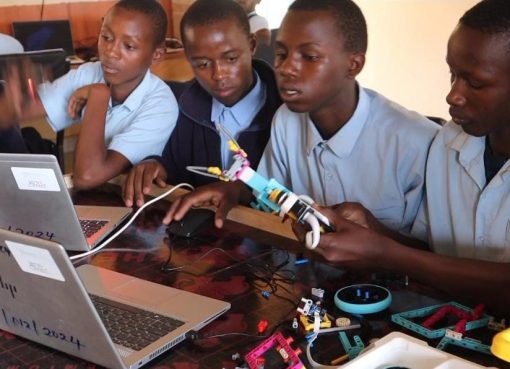The County Government of Nakuru has set a target of 70 percent access to modern clean cooking solutions by 2027 in response to national obligations Sustainable Development Goals (SDG) 7 and the Nationally Determined Contributions (NDC).
Kenya’s obligation under the Nationally Determined Contributions is to reduce the emission of Greenhouse gases by 32 percent by 2030, while that for SDG 7 is to enable universal access to clean energy by 2030.
County Executive Committee Member (CECM) for Water, Environment, Energy and Natural Resources Dr Nelson Maara said the County was championing the use of clean cooking solutions as a way of promoting renewable energy and energy efficiency.
Addressing a stakeholders’ forum during the Kenya ICS last mile Entrepreneur Acceleration Project workshop on clean cooking, themed ‘Upishi Bora, Afya Bora,’ Dr Maara lauded the Nakuru Clean Cooking Technical Working Group for supporting the coordinated and harmonized approach between various sectors and Stakeholders at the county level to create a conducive environment for last mile entrepreneurs.
The CECM who was flanked by Nyandarua County Secretary and Chief of Staff Mr Frank Muchina and representatives from Practical Action Group, explained that the Kenya National Cooking Transition Strategy (2024) was the overreaching roadmap for the cooking sector embracing multiple fuels that include liquefied petroleum gas (LPG), ethanol, electric cooking, biogas and sustainable clean biomass.
The Electric Cooking Strategy (2024) is designed to bridge the policy gap between electricity access and its use for cooking. Despite the high access to electricity at 77 percent, less than one percent of households use it for cooking.
It is estimated that about 9.1 million households in Kenya’s rural and urban areas still rely on traditional cooking solutions such as charcoal and firewood with only about 31 percent of Kenya households said to use clean cooking solutions.
Dr Maara however pointed out that the Behaviour Change and Communication Strategy (2022) promotes awareness about benefits of switching from traditional cooking methods to clean cooking alternatives.
“This strategy was launched in 2022 and is being implemented through above-the-line and below-the-line approaches to create awareness with the rallying call being ‘Upishi Bora, Afya Bora,” stated the CECM.
The County official argued that to establish lasting and sustainable solutions, those most deeply involved in the activity of cooking namely women who represent rural and peri-urban communities across the continent, must be firmly and squarely be established at the helm of the discussions and their perspective must directly inform decision-making.
He pointed out that Electric stoves and induction cooktops are the most environmentally friendly options, as they produce no direct emissions. He added that LPG is a cleaner alternative to biomass and can be used in various cooking appliances, including stoves and cookers. Biogas, produced from organic waste, is a renewable and clean energy source that can be used for cooking.
“SDG 7 demands we ‘ensure access to affordable, reliable, sustainable, and modern energy for all.’ Clean cooking is a crucial component of achieving this goal. We can achieve this by using cleaner fuels and technologies while ensuring everyone has access to the affordable, reliable, and modern energy needed for a better quality of life,” the CECM elaborated.
Dr. Maara expressed concern that continued reliance on traditional cooking methods will perpetuate environmental degradation, public health crises, and social inequalities. Deforestation will continue leading to loss of biodiversity and increased impact of climate change.
Clean cooking refers to using fuels and technologies that emit less smoke, carbon monoxide, and particulate matter. This shift from traditional cooking methods is essential for improving public health, reducing environmental degradation, and contributing to sustainable development.
Traditional cooking methods often rely on polluting fuels like wood, charcoal, or kerosene, leading to significant indoor air pollution. This exposure is a major cause of respiratory diseases, particularly among women and children who spend long hours cooking indoors.
Recent data from the World Health Organization (WHO) estimates that more than two billion people cook their meals using fuels (crop waste, charcoal, coal, wood and dung) and kerosene in open fires or inefficient stoves. A majority of these households, WHO says, live in low-middle-income countries like Kenya.
WHO classifies firewood and charcoal as polluters and Clean cooking fuels that are safe for the environment and household use being solar power, cooking gas (liquefied petroleum gas), biogas and electricity from renewable sources like solar or wind.
In the 2022 Kenya Demographic and Health Survey (KDHS), only five per cent of those in rural areas rely on clean fuels and technologies for cooking and space heating.
According to the World Health Organization (WHO), indoor air pollution from cooking is responsible for over 4 million deaths annually, mostly in developing countries. Globally, the cleanest cooking methods include electricity, liquefied petroleum gas (LPG), and biogas.
The Global Alliance for Clean Cookstoves (GACC) indicates that more than three billion people worldwide still rely on polluting cooking fuels and technologies. This has severe health consequences, especially for those who spend long hours cooking indoors.
Indoor air pollution is a major contributor to respiratory diseases, such as pneumonia and chronic obstructive pulmonary disease (COPD). Exposure to harmful pollutants from traditional cooking methods can also increase the risk of heart disease, cancer, and other chronic illnesses.
Countries worldwide are making strides in adopting clean cooking technologies, but progress varies significantly across regions. Developed nations tend to have higher adoption rates, while many developing countries face substantial challenges.
Despite progress made in recent years, Africa continues to lag in adopting clean cooking technologies. Several factors contribute to this including high costs, limited access to electricity, and cultural preferences are among the primary challenges.
By Esther Mwangi


